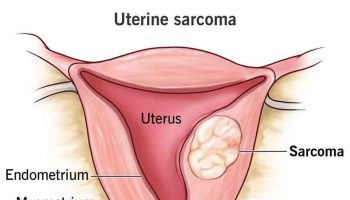Disseminated disease
Disseminated disease refers to a widespread or diffuse disease-process, generally either infectious or neoplastic, but sometimes also referring to connective tissue disease. A disseminated infection, for example, has extended beyond its origin or nidus and involved the bloodstream to “seed” other areas of the body. Similarly, you can view metastatic cancer as a disseminated infection in that it has extended into the bloodstream or into the lymphatic system and thus “seeded” distant sites, a process known as metastasis. Disseminated disease is often referred to in contrast to localized disease.
Disseminated coccidioidomycosis
Disseminated coccidioidomycosis is caused by breathing in the spores of a fungus Coccidioides immitis or Coccidioides posadasii found in desert regions. The Coccidioides fungus is known to live in the soil in the southwestern United States and parts of Mexico and Central and South America. In the United States, Coccidioides lives in Arizona, California, Nevada, New Mexico, Texas, and Utah. The fungus was also recently found in south-central Washington 1. People can get coccidioidomycosis also known as Valley fever, by breathing in the microscopic fungal spores from the air, although most people who breathe in the Coccidioides spores don’t get sick. The fungi’s spores can be stirred into the air by anything that disrupts the soil, such as farming, construction and wind. Usually, people who get sick with Valley fever will get better on their own within weeks to months, but some people will need antifungal medication. Certain groups of people, especially immunosuppressed people, are at higher risk for becoming severely ill. It’s difficult to prevent exposure to Coccidioides in areas where it’s common in the environment, but people who are at higher risk for severe Valley fever should try to avoid breathing in large amounts of dust if they’re in these areas. Mild cases of Valley fever usually resolve on their own. In more severe cases, doctors prescribe antifungal medications that can treat the underlying infection. Antifungals may help but the death rate is very high.
The most serious form of the coccidioidomycosis is disseminated coccidioidomycosis, which occurs when the infection spreads (disseminates) beyond the lungs to other parts of the body 2. Most often these parts include the skin, bones, liver, brain, heart, and the membranes that protect the brain and spinal cord (meninges).
The signs and symptoms of disseminated coccidioidomycosis depend on which parts of your body are affected and may include:
- Nodules, ulcers and skin lesions that are more serious than the rash that sometimes occurs with other forms of the disease
- Painful lesions in the skull, spine or other bones
- Painful, swollen joints, especially in the knees or ankles
- Meningitis — an infection of the membranes and fluid surrounding the brain and spinal cord
Who gets coccidioidomycosis or Valley fever?
Anyone who lives in or travels to the southwestern United States (Arizona, California, Nevada, New Mexico, Texas, or Utah), or parts of Mexico or Central or South America can get Valley fever. Valley fever can affect people of any age, but it’s most common in adults aged 60 and older. Certain groups of people may be at higher risk for developing the severe forms of coccidioidomycosis (Valley fever), such as:
- People who have weakened immune systems, for example, people who:
- Pregnant women 6
- People who have diabetes 7
- People who are Black 8 or Filipino 9
Is coccidioidomycosis or Valley fever contagious?
No. The fungus that causes Valley fever, Coccidioides, can’t spread from the lungs between people or between people and animals. However, in extremely rare instances, a wound infection with Coccidioides can spread Valley fever to someone else 10 or the infection can be spread through an organ transplant with an infected organ 11.
Should I worry about coccidioidomycosis or Valley fever if I’m traveling to an area where the fungus is common?
The risk of getting coccidioidomycosis or Valley fever is low when traveling to an area where Coccidioides lives in the environment, such as the southwestern United States, Mexico, or Central or South America. Your risk for infection could increase if you will be in a very dusty setting, but even then the risk is still low. If you have questions about your risk of getting Valley fever while traveling, talk to your healthcare provider.
I’ve had it before could I get coccidioidomycosis again?
Usually not. If you’ve already had Valley fever, your immune system will most likely protect you from getting it again. Some people can have the infection come back again (a relapse) after getting better the first time, but this is very rare.
Can my pets get coccidioidomycosis or Valley fever?
Yes. Pets, particularly dogs, can get valley fever, but it is not contagious between animals and people. Valley fever in dogs is similar to valley fever in humans.10 Like humans, many dogs that are exposed to Coccidioides never get sick. Dogs that do develop symptoms often have symptoms that include coughing, lack of energy, and weight loss. If you’re concerned about your pet’s risk of getting Valley fever or if you think that your pet has Valley fever, please talk to a veterinarian.
How can I prevent coccidioidomycosis or Valley fever?
It’s very difficult to avoid breathing in the fungus Coccidioides in areas where it’s common in the environment. People who live in these areas can try to avoid spending time in dusty places as much as possible. People who are at risk for severe Valley fever (such as people who have weakened immune systems, pregnant women, people who have diabetes, or people who are Black or Filipino) may be able to lower their chances of developing the infection by trying to avoid breathing in the fungal spores.
The following are some common-sense methods that may be helpful to avoid getting Valley fever. It’s important to know that although these steps are recommended, they haven’t been proven to prevent Valley fever.
- Try to avoid areas with a lot of dust like construction or excavation sites. If you can’t avoid these areas, wear an N95 respirator (a type of face mask) while you’re there.
- Stay inside during dust storms and close your windows.
- Avoid activities that involve close contact to dirt or dust, including yard work, gardening, and digging.
- Use air filtration measures indoors.
- Clean skin injuries well with soap and water to reduce the chances of developing a skin infection, especially if the wound was exposed to dirt or dust.
- Take preventive antifungal medication if your healthcare provider says you need it.
Is there a vaccine for coccidioidomycosis or Valley fever?
No. Currently, there is no vaccine to prevent Valley fever, but scientists have been trying to make one since the 1960s. Because people who’ve had Valley fever are usually protected from getting it again, a vaccine could make the body’s immune system think that it’s already had Valley fever, which would likely prevent a person from being able to get the infection.
Scientists have tried several different ways to make a Valley fever vaccine. When one version of the vaccine was tested on humans in the 1980s, it didn’t provide good protection, and it also caused people to develop side effects such as swelling at the injection site 12. Since then, scientists have been looking at ways to make a vaccine with different ingredients that will provide better protection against Valley fever and won’t cause side effects. Studies of these new vaccines are ongoing, so it’s possible that a vaccine to prevent Valley fever could become available in the future 13.
How is coccidioidomycosis (Valley fever) diagnosed?
Healthcare providers rely on your medical and travel history, symptoms, physical examinations, and laboratory tests to diagnose coccidioidomycosis (Valley fever). The most common way that healthcare providers test for coccidioidomycosis (Valley fever) is by taking a blood sample and sending it to a laboratory to look for Coccidioides antibodies or antigens.
Healthcare providers may do imaging tests such as chest x-rays or CT scans of your lungs to look for coccidioidomycosis (Valley fever) pneumonia. They may also perform a tissue biopsy, in which a small sample of tissue is taken from the body and examined under a microscope. Laboratories may also see if Coccidioides will grow from body fluids or tissues this is called a culture.
Serologic tests to detect IgM and IgG antibodies are most often used to diagnose coccidioidomycosis 14. Other methods include culture and microscopy.
- Serology:
- Enzyme immunoassay (EIA): A very sensitive and commonly used method for diagnosing coccidioidomycosis.. Two EIAs for detection of specific IgM and IgG antibodies against Coccidioides are currently available:
- Premier ® Coccidioides EIA – Meridian Bioscience, Inc.
- Enzyme Immunoassay for detection of specific antibodies against Coccidioides spp – Immuno Mycologics, Inc. (IMMY)
- Immunodiffusion (ID): detects IgM antibodies; positive early in the course of infection.
- Complement Fixation (CF): detects IgG antibodies and allows for assessment of disease severity.
- Lateral Flow Assay (LFA): The Sona Coccidioides Antibody LFA (Immuno Mycologics, Inc. [IMMY]) is a rapid test (~30 minutes) to detect the presence of total antibodies against Coccidioides spp (IgM or IgG).
- Enzyme immunoassay (EIA): A very sensitive and commonly used method for diagnosing coccidioidomycosis.. Two EIAs for detection of specific IgM and IgG antibodies against Coccidioides are currently available:
- Culture: Can be performed on tissue and respiratory specimens; however, sputum can be difficult to obtain for culture since patients’ coughs are often non-productive. Processing and manipulation of cultures should be done in a biosafety level 3 laboratory.
- Microscopy: for detection of spherules in tissue or respiratory secretions; low sensitivity.
- Urinary antigen detection: Not widely used, but may have some utility in diagnosing coccidioidomycosis in immunocompromised patients with severe forms of the disease 15.
- Polymerase Chain Reaction (PCR): A PCR for detection of Coccidioides directly from lower respiratory specimens (GeneSTAT.MDx Coccidioides – DxNA, LLC) has been approved by the Food and Drug Administration 16. Other PCR tests are still experimental but appear promising 17.
Skin testing
A skin test can detect whether you have developed an immune response to the fungus Coccidioides, the cause of coccidioidomycosis (Valley fever) 18. This test became available again in the United States in 2014 for the first time since the late 1990s 18. Your healthcare provider might do this test if you have a history of coccidioidomycosis (Valley fever).
The test involves getting a small injection on the inside of your forearm, similar to a skin test for tuberculosis. If the test is positive, a bump will appear at the injection site. A healthcare provider must examine the injection site two days (48 hours) after the test was given to measure the size of the bump.
A positive test result means that you have an immune response to Coccidioides because of a past or current Coccidioides infection. Some people with a positive test result have been sick with coccidioidomycosis (Valley fever), which can cause a flu-like illness and other symptoms, but many people with a positive test have not had symptoms from the infection. A positive skin test generally means that you are immune to Coccidioides and will not get coccidioidomycosis (Valley fever) in the future.
A negative skin test can mean that you have not been exposed to Coccidioides and have not had coccidioidomycosis (Valley fever). However, some people may not react to the skin test even though they have had a Coccidioides infection. This is called a false-negative result. False-negative results occur more commonly in people who:
- Have had a Coccidioides infection that is recent or severe
- Have a condition or illness that interferes with the skin test results
- Are taking a medication that interferes with the skin test results
For more information about skin testing for coccidioidomycosis (Valley fever), talk with your healthcare provider.
Disseminated coccidioidomycosis treatment
Disseminated coccidioidomycosis requires antifungal treatment, typically fluconazole or amphotericin B and may need to stay in the hospital. For these types of infections, the course of treatment is usually longer than 6 months. Valley fever that develops into meningitis is fatal if it’s not treated, so lifelong antifungal treatment is necessary for those cases. For more detailed treatment guidelines, please refer to the Infectious Diseases Society of America’s Practice Guidelines for the Treatment of Coccidioidomycosis 19.
- Marsden-Haug N, Goldoft M, Ralston C, Limaye AP, Chua J, Hill H, et al. Coccidioidomycosis acquired in Washington State. Clin Infect Dis. 2013 Mar;56(6):847-50.[↩]
- Thompson GR, 3rd. Pulmonary coccidioidomycosis. Seminars in respiratory and critical care medicine 2011;32:754-63.[↩]
- Woods CW, McRill C, Plikaytis BD, Rosenstein NE, Mosley D, Boyd D, et al. Coccidioidomycosis in human immunodeficiency virus-infected persons in Arizona, 1994-1997: incidence, risk factors, and prevention. J Infect Dis. 2000 Apr;181(4):1428-34.[↩]
- Blair JE, Logan JL. Coccidioidomycosis in solid organ transplantation. Clin Infect Dis. 2001 Nov 1;33(9):1536-44.[↩]
- Bergstrom L, Yocum DE, Ampel NM, Villanueva I, Lisse J, Gluck O, et al. Increased risk of coccidioidomycosis in patients treated with tumor necrosis factor alpha antagonists. Arthritis and rheumatism. 2004 Jun;50(6):1959-66.[↩]
- Bercovitch RS, Catanzaro A, Schwartz BS, Pappagianis D, Watts DH, Ampel NM. Coccidioidomycosis during pregnancy: a review and recommendations for management. Clin Infect Dis. 2011 Aug;53(4):363-8.[↩]
- Rosenstein NE, Emery KW, Werner SB, Kao A, Johnson R, Rogers D, et al. Risk factors for severe pulmonary and disseminated coccidioidomycosis: Kern County, California, 1995-1996. Clin Infect Dis. 2001 Mar 1;32(5):708-15.[↩]
- Durry E, Pappagianis D, Werner SB, Hutwagner L, Sun RK, Maurer M, et al. Coccidioidomycosis in Tulare County, California, 1991: reemergence of an endemic disease. J Med Vet Mycol. 1997 Sep-Oct;35(5):321-6.[↩]
- Crum NF, Lederman ER, Stafford CM, Parrish JS, Wallace MR. Coccidioidomycosis: a descriptive survey of a reemerging disease. Clinical characteristics and current controversies. Medicine. 2004 May;83(3):149-75.[↩]
- Eckmann BH, Schaefer GL, Huppert M. Bedside Interhuman Transmission of Coccidioidomycosis Via Growth on Fomites. An Epidemic Involving Six Persons. Am Rev Respir Dis. 1964 Feb;89:175-85.[↩]
- Dierberg KL, Marr KA, Subramanian A, Nace H, Desai N, Locke JE, et al. Donor-derived organ transplant transmission of coccidioidomycosis. Transpl Infect Dis. 2012 Jun;14(3):300-4.[↩]
- Pappagianis D. Evaluation of the protective efficacy of the killed Coccidioides immitis spherule vaccine in humans. The Valley Fever Vaccine Study Group. Am Rev Respir Dis. 1993 Sep;148(3):656-60.[↩]
- Cole GT, Hurtgen BJ, Hung CY. Progress Toward a Human Vaccine Against Coccidioidomycosis. Curr Fungal Infect Rep. 2012 Dec 1;6(4):235-44.[↩]
- Ampel NM. The diagnosis of coccidioidomycosis. F1000 Med Rep. 2010[↩]
- Durkin M, P C, T K, R M, BM K, D B, et al. Diagnosis of Coccidioidomycosis with Use of the Coccidioides Antigen Enzyme Immunoassay. Clin Infect Dis. 2008;47:e69-73.[↩]
- Saubolle MA, Wojack BR, Wertheimer AM, Fuayagem AZ, Young S, Koeneman BA. Multicenter Clinical Validation of a Cartridge-Based Real-Time PCR System for Detection of Coccidioides spp. in Lower Respiratory Specimens. J Clin Microbiol. 2018 Jan 24;56(2). pii: e01277-17.[↩]
- Sheff KW, York ER, Driebe EM, et al. Development of a rapid, cost-effective TaqMan Real-Time PCR Assay for identification and differentiation of Coccidioides immitis and Coccidioides posadasii. Med Mycol 2009;48:466-469.[↩]
- Wack EE, Ampel NM, Sunenshine RH, Galgiani JN. The Return of Delayed-Type Hypersensitivity Skin Testing for Coccidioidomycosis. Clin Infect Dis. 2015 Sep 1;61(5):787-91.[↩][↩]
- John N. Galgiani, Neil M. Ampel, Janis E. Blair, Antonino Catanzaro, Francesca Geertsma, Susan E. Hoover, Royce H. Johnson, Shimon Kusne, Jeffrey Lisse, Joel D. MacDonald, Shari L. Meyerson, Patricia B. Raksin, John Siever, David A. Stevens, Rebecca Sunenshine, Nicholas Theodore, 2016 Infectious Diseases Society of America (IDSA) Clinical Practice Guideline for the Treatment of Coccidioidomycosis, Clinical Infectious Diseases, Volume 63, Issue 6, 15 September 2016, Pages e112–e146, https://doi.org/10.1093/cid/ciw360[↩]





